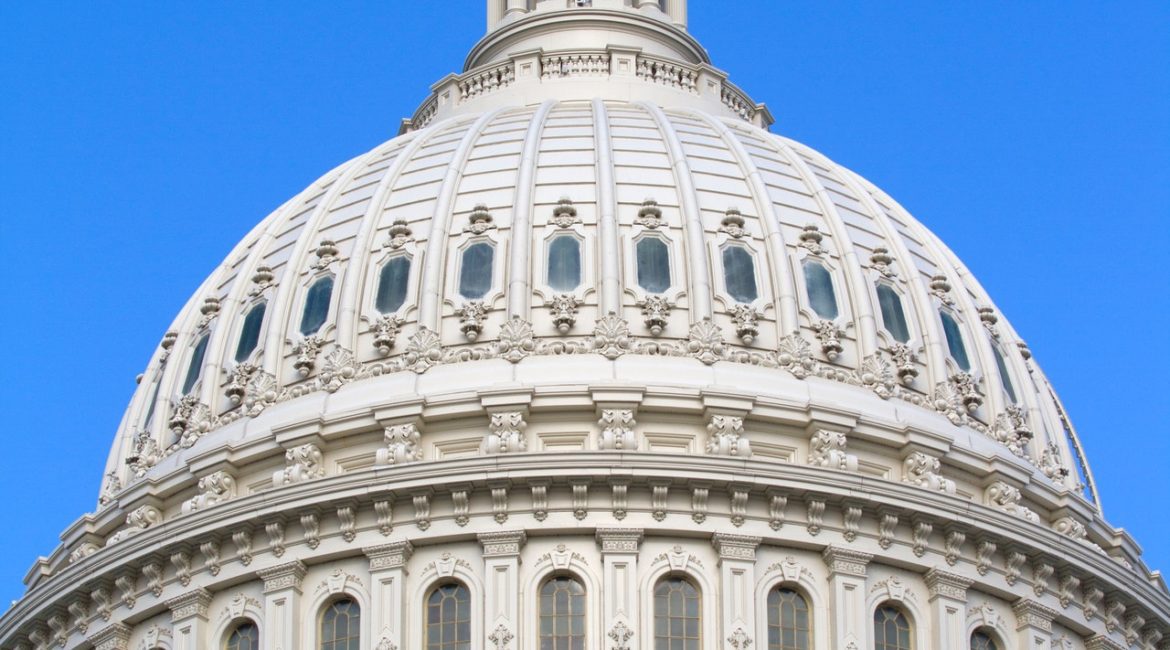Stories about the debt ceiling have dominated the news cycle since August, when the suspension enacted in 2019 expired and the debt ceiling was reinstated at $28.5 trillion – the current amount of total US debt. Janet Yellen, the US Secretary of the Treasury, has been warning Congress for weeks that the US will not be able to pay its bills by October 18th unless the limit is suspended again or raised, so Congress has been debating the issue.
Late last night, President Biden signed a bill to avoid a partial federal shutdown and keep the government funded through December 3rd, but the issue about the debt ceiling still hangs over our heads (no pun intended).
The debt ceiling has been shrouded in political drama this year, but for the uninitiated, it’s not a super flashy subject. The debt ceiling or debt limit is just how it sounds – a limit on the amount of money that the federal government is able to borrow to pay off its financial obligations such as social programs, interest on national debt, and salaries for the military – or COVID relief efforts.
Coupled with the debates about the debt ceiling are conversations about when the Fed will begin tapering, or reducing the assets that they are purchasing to cut back on spending. One important distinction to make is that the debt ceiling and legislation around it does not officially authorize any new spending – it only allows the US to pay for spending that has already occurred.
Considering all of this heated debate today, let’s look further back in time at the history of the debt ceiling.
History of the Debt Ceiling
The debt ceiling was enacted in 1917 during World War I with the Second Liberty Bond Act. This allowed the Treasury to issue bonds and take on other debt without obtaining Congress’ approval, as long as the debt did not exceed a certain amount. Thus, the debt ceiling was created so that the US could be more flexible in financing WWI, and a general limit on the federal debt was enacted soon after in 1939.
Since 1960, the US Treasury says that Congress has moved 78 separate times to permanently raise, temporarily extend, or revise the definition of the debt limit. As a result, the US has never officially defaulted or been unable to pay its bills, but there have been a few instances where Congressional debates like the ones we are witnessing today sent the US into a crisis.
1995, 2011, and 2013 Crises
Usually the debt ceiling gets raised without debate, but there are a few notable exceptions.
In 1995 there was a request for a debt ceiling increase which prompted Congress to debate whether the federal government should be smaller. This led to non-passage of the federal budget and a federal government shutdown. The ceiling was eventually increased.
In 2011, Republicans refused to raise the debt ceiling unless Congress agreed to a complex deal negotiating future spending cuts. This triggered a crisis in which the markets were very volatile, and ultimately resulted in the credit agency Standard & Poor’s downgrading the United States’ credit rating for the first time (although other credit agencies did not change the US’ credit score). Beyond this impact, the 2011 debt ceiling crisis also increased borrowing costs significantly (by $1.3 billion in 2011 and $18.9 billion over 10 years).
After finally increasing the debt ceiling to $16.394 trillion in 2011, the US reached the ceiling again on December 31, 2012. The Affordable Taxpayer Relief Act of 2012 cut back on taxes, which prompted a need for the debt ceiling to be raised by $700 billion in order to continue financing operations. If it wasn’t, the Treasury would have to freeze payments, putting a freeze on 7% of the nation’s GDP. The No Budget, No Pay Act of 2013 suspended the US debt ceiling for the first time from February to May 2013.
The Treasury took extraordinary measures while waiting for the ceiling to be raised, but the Republican members of Congress refused to raise the ceiling unless President Obama defunded the Affordable Care Act. The government shut down until the Continuing Appropriations Act, 2014 was passed, which increased the debt limit.
The debt limit was suspended most recently in 2019 for two years. A few days ago, the House of Representatives voted to suspend the debt limit again until the end of 2022 in an effort to avoid a government shutdown, but the Senate blocked it. Republicans are opposed to raising or suspending the limit because Biden’s COVID relief plan, The American Rescue Plan, is expensive, and in their perspective raising or suspending the debt limit would be a version of supporting that policy.
What happens if we don’t raise the limit?
We’ve made comparisons between the US budget and a household budget before, and if the US is not able to increase the debt limit, it will not be able to pay its bills. Again, the debt ceiling doesn’t officially have anything to do with authorizing new spending – it only helps the US pay off existing obligations.
As seen in 2011, delays in raising the debt ceiling negatively affected the United States’ credit score, which will negatively impact the United States’ ability to access funding in the international bond market.
History also shows us that the federal government will shut down during these periods of debate about the debt ceiling limit. Government shutdowns are expensive, bad for the economy, bad for government workers, and interrupt federal programs and services that influence our day-to-day lives.
On a macro level, not raising the debt ceiling will impact the US economy, with experts suggesting there will be interest rate spikes, stock price plunges, and that it could be the match igniting the bomb that is the current bonds market.
What happens when we raise the debt ceiling?
Raising the debt ceiling is largely a formality and for many years was simply routine. Debate continues about whether or not the debt ceiling should be used in political negotiations.
While raising the debt limit does not authorize new spending, it’s clear that new spending is being considered in both parties’ arguments to raise, freeze, or suspend the ceiling.
In this specific case, Democrats are raising revenue by increasing taxes to fund their future economic agenda, including the COVID Relief Plan, but they will still need more funds while they’re waiting for those tax increases to kick in. Ultimately, the Democrats are advocating for a suspension of the debt ceiling instead of raising it to a specific number to cover current obligations while keeping the imminent financial obligations that would be needed to fund their policies in mind.
If the debt ceiling is just a formality-turned-negotiation-tool, why do we have it?
There’s really no replacement for the debt ceiling, which is a big reason why we keep it around. Other countries do things a little differently – for example, Denmark has a debt limit, but it’s so high that raising it doesn’t come up. Poland has a limit but it’s based on a percentage of their GDP rather than a number. However, getting rid of the debt limit or changing its definition would require Congress’ approval, and clearly from the conversations they have been having for the past couple months we shouldn’t hold our breath that both parties will agree on anything any time soon.
At NEST, we don’t focus on political drama or factor opinions or emotions into our decision-making. Our data-driven process and in-house management insulates our portfolios from sensationalism, so that they stay on track to hit their return rate goals despite what’s happening in the news. Reach out by emailing the partners at info@nestfinancial.net and learn more about our philosophy and process.
Find us on:
LinkedIn Facebook Yelp Twitter
DISCLAIMER: We are legally obligated to remind you that the information and opinions shared in this article are for educational purposes only and are not financial planning or investment advice. For guidance about your unique goals, drop us a line at info@nestfinancial.net.






[…] the market as a whole. This includes market risk, which describes volatility that is the result of political, economic, environmental, and sociological events – such as a change in business climate […]
[…] as we brace ourselves for the next chapter in the “History of the US Debt Limit and Everything You Thought You Knew About It,” let’s hope pragmatism trumps political posturing. Remember, this isn’t just a […]